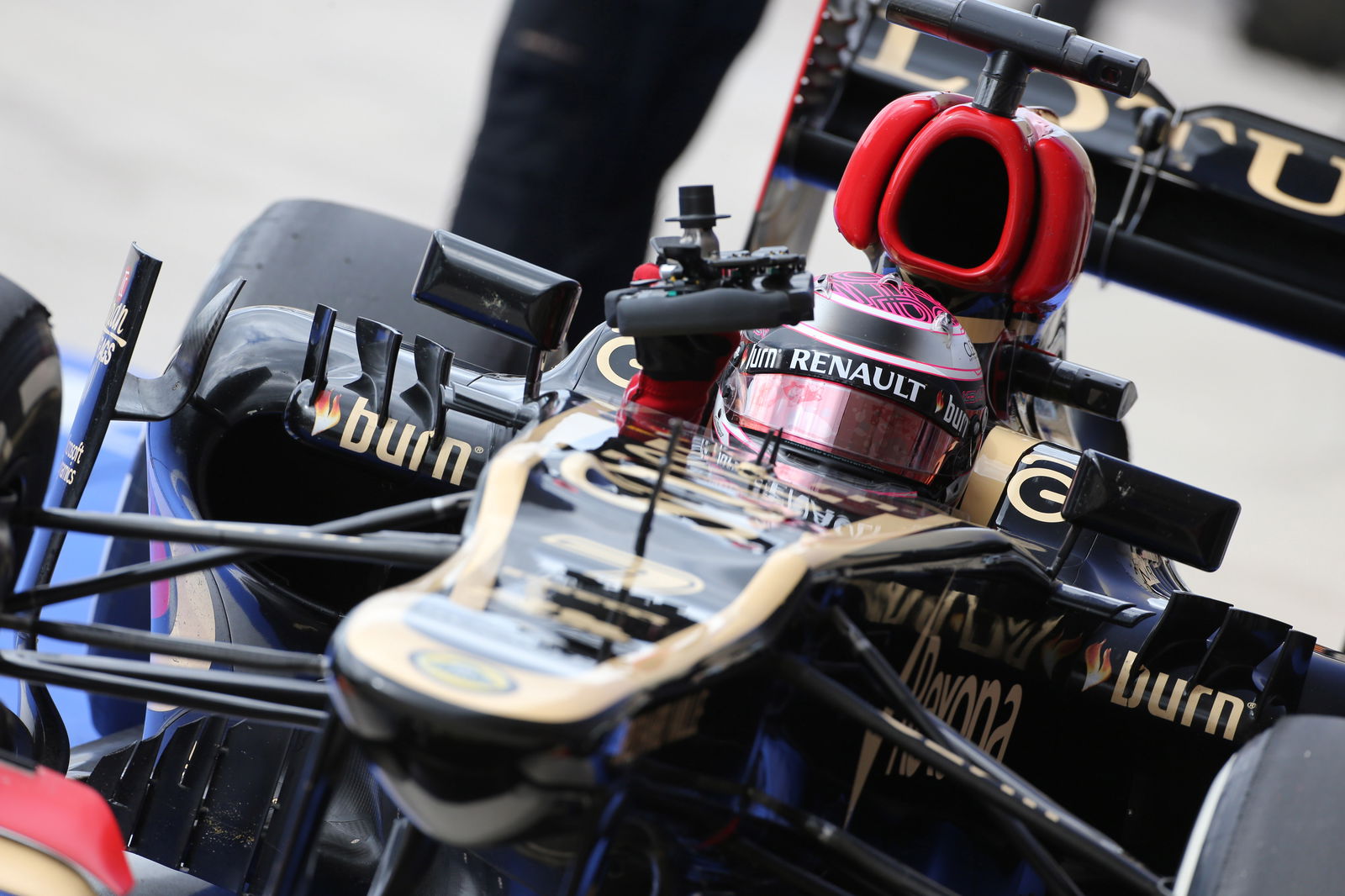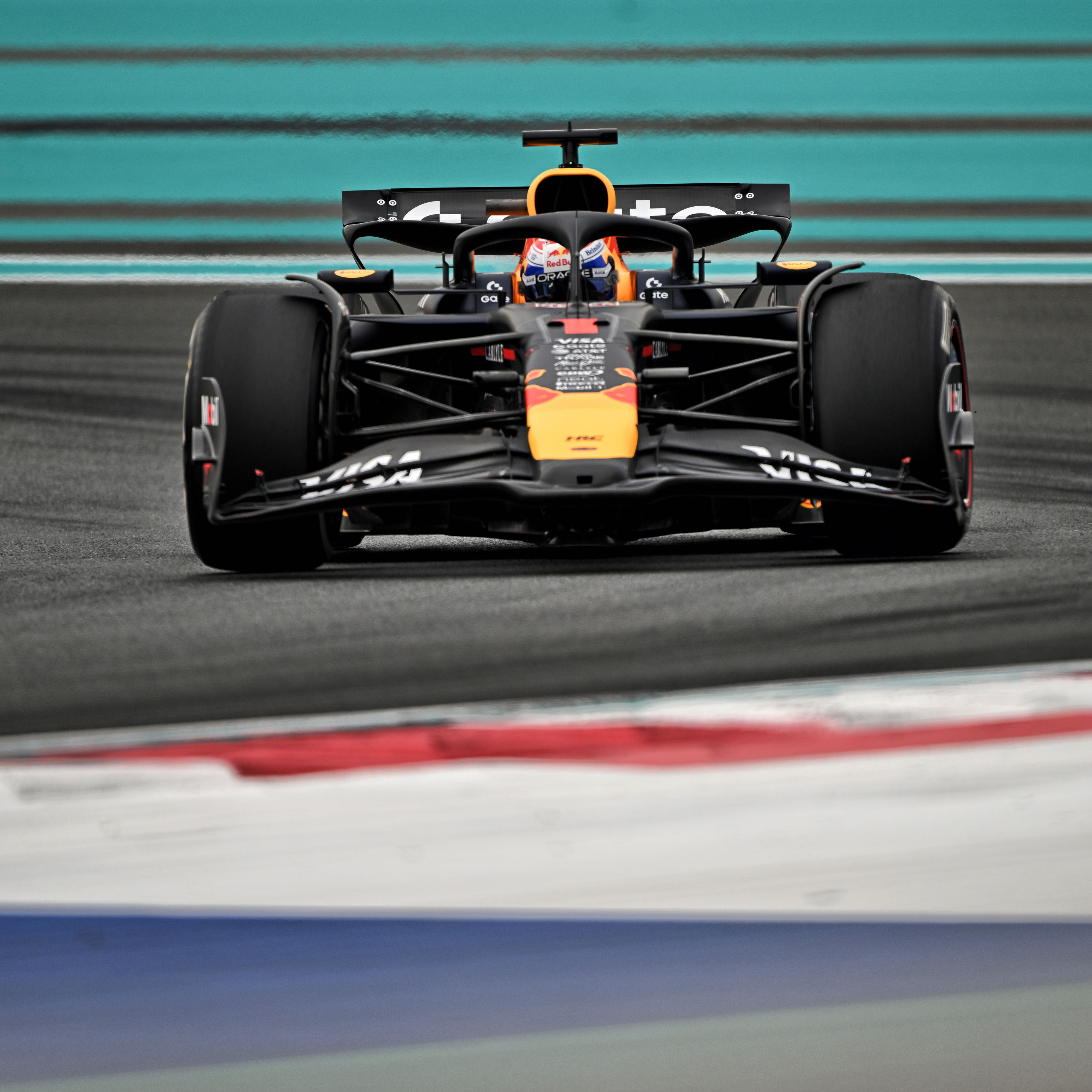United States Grand Prix: Experiencing Austin

If Sebastian Vettel, on the eve of his fourth consecutive F1 world title, can tell the world 'I sh*t myself', so can I...
The German, now on the verge of becoming one of the most successful grand prix drivers of all time, was talking about the first time he sat in an F1 car, reflecting on just how far he had come in the intervening years. I, on the other hand, am about to swap my humble Mini Cooper Clubman for a McLaren...
Admittedly, it isn't an MP4-28 - or even the MP4-26 sitting idly in the garage at the Circuit of the Americas - that I am talking about, but the Woking company's 12C still represents a significant step up in performance.
The opportunity, which defines 'once in a lifetime', comes courtesy of Mobil1, McLaren's official fuel and lubricant partner, which has arranged a fleet of the sleek sportscars with which to ferry the media around the USA's latest F1 circuit. Well, that was the initial offer carried in the invitation to attend... By the time I was boarding my Delta Airlines flight and heading to Austin - appropriately, perhaps, via the original 'Motor City' - the offer was upped to get behind the wheel myself.
The Circuit of the Americas is, at first glance, an unassuming place. Set back from the freeway, you might pass by without noticing it if you weren't going there, but, once inside, it is clearly an impressive feat of engineering. Everything, of course, is purpose-built, designed to give the F1 world the facilities it now demands as the sport attempts, once again, to establish a footing in the US. Various hosts have come and gone - from 'real' circuits like Watkins Glen and Indianapolis to the generally detested street (and car park) layouts of Phoenix, Las Vegas and, a couple of hundred miles up the road, Dallas - so the importance being placed on Austin's success is obvious.
"I think it was really important," circuit designer Christian Epp claims, "There was a lot of pressure on us and the promoter, to get it right, to make it happen. Last year's race showed that it worked really well and we really hope that F1 finds its home at this circuit. That was our objective, our goal, and it's promising. From everything that happened last year, it seems to be working in the right direction."
Epp is well aware of the challenges faced by the Circuit of the Americas. Employed by Tilke Engineers & Architects, F1's circuit designer of choice in an age where half the world seemingly wants to find a place on the calendar, he was handed the responsibility of constructing a venue from scratch on the outskirts of the Texas state capital.
Encouragingly, he was given carte blanche with a brown-field site, able to choose which section of a vast swathe of land would provide the best base for realising former racer Tavo Hellmund's dream of bringing F1 to the Lone Star State.
Presented with a rolling landscape, Epps says he immediately envisaged CotA's signature first turn, while the remainder of the 20-corner layout formed gradually, combining the desires of Hellmund and former 500cc bike champion Kevin Schwantz to replicate some of the world's most famous curves with the natural challenge presented by Texas itself.
"We picked a nice piece of land, with topography that we could play with," he explains, "It is something that we felt would appeal to drivers, to work in a 3D experience - a track is not a two-dimensional object and you want to experience it with elevation change.
"The initial meeting was 'Christian, can you design a track and include some of the best corners out there in F1'. We had a list of all these turns and the track would have been 30 miles long if we had included them all! So, of course, we had to limit it a little.
"The signature turn here at Austin is definitely turn one, and then you'll recognise other sections, such as sector one - turns two to seven - which is a bit like Maggotts-Becketts at Silverstone; the Hockenheim stadium section after turn twelve; and a little bit where we have the Istanbul section, the triple-apex turn [at 16-18].
"What we have tried to do is design a racetrack that is challenging for these drivers - which is very, very difficult as they are so good - and I think that CotA turned out quite a good racetrack."
There are limits to what could be included, both from a practical - Epp admits that the original design had more than 20 corners - and safety point of view, with some of the older classics simply not workable in a more safety-conscious 21st century.
"We would like to replicate or create a 'classic' circuit, but there are regulations today, FIA safety regulations, that we have to stick to," he points out, "We could be more creative of course, but the track would never get homologation. It's always a trade-off with making a track safe. When we do F1, or [tracks for] any other FIA races, it is almost impossible for us to redo the old classics.
"The Nurburgirng has so many features that you could do so many tracks just out of the Nurburgring, but we always try to be inventive, to do 'new' tracks. There is nothing here in Austin that exists somewhere else, the entire track is completely tailor-made for this site, this venue."
After a difficult gestation, in which the venue suffered the increasingly common disputes, wrangling and doubt before becoming a reality, the layout was widely lauded by the F1 crowd.
"It's got a bit of everything really, so it's good," Vettel's Red Bull team-mate Mark Webber said on the opening day of the circuit's 2012 F1 debut, "It's quick, especially the first sector which is quite full-on, although sectors two and three are more traditional and similar to other tracks. As with all new circuits, you've got to work out where you can prioritise your time and where to compromise."
Former McLaren favourite Lewis Hamilton similarly described the layout as 'a great drivers' track', reporting that 'it's very tough to pull together three perfect sectors' and admitting that he found the final two sectors easier than the first, noting that 'those high-speed changes of direction need a good set-up, and balancing that requirement against the demands of the slow-speed stuff is tricky'.
Erstwhile team-mate, and current McLaren team leader, Jenson Button has the same opinion, claiming that 'turn one to turn nine is a brilliant and free-flowing section'.
"Turn one is a strange corner, with a very wide entry, and turn three - the start of the esses - is fantastic, quicker than Becketts at Silverstone," he explained, "It's very unusual to find a section of corners like this on a modern F1 track. I love it."
Letting the media loose around the circuit was to have been the precursor to a joint McLaren/Pirelli test, one which was ultimately vetoed by rivals worried that the Woking team would seize an early advantage ahead of the USGP, despite running with a two-year old car and a brace of development drivers in place of regular racers Jenson Button and Sergio Perez. With the invitations already issued, however, the car, back-up team and driver Oliver Turvey were still in place, and the young Briton was clearly excited by the prospect of putting the MP4-26 through its paces.
The Circuit of the Americas, its corners still identified by number rather than the more evocative names that come with established European venues, is definitely Jekyll and Hyde in nature. After the signature ascent to turn one, a gradient reminiscent of Eau Rouge and Paddock Hill, turn two leads the opening section into a dizzying combination of esses through turns three to six, before rising up to the blind left at seven. As with Silverstone's Becketts section, getting one apex slightly wrong will have repercussions for the following one, maybe more.
"I think having good brakes going in to turn one is important!" Turvey jokes, "It's such a steep hill, you're almost pointing up into the sky.
"I think this circuit is a challenge because you have the high speed through the first section and also the slower speed corners from turn twelve through to turn 16, where you've got some very tricky braking sections, where you're braking and trying to turn. Then, in the final section of the track, there are again some quite quick corners, so getting the most out of the car is a compromise of high speed and slow speed.
"[Turns 2-8] is certainly one of the most challenging parts of the track. It's a real fast section, but there's also some gradient changes through there and a lot of the corners are blind and trying to find the apex is particularly tricky - if you get offline through one of the corners, it affects the whole complex. It's really like threading a needle through there, a real challenge from the driver's point of view."
Once turns eight and nine are dispensed with, and the kink at ten brushed aside, there is a moment of harder braking before the cars are unleashed onto the long back straight. F1 cars reach nearly 200mph here, before having to shed much of that for the tight second gear left at turn twelve, taken at just a shade over a quarter of its approach speed.
From this point, the more mundane side of CotA takes effect, with turns 13, 14 and 15 little more than a means of concentrating the mind. The combination bears comparison with Hockenheim's stadium section but, even flanked by grandstands, it begs the question of what the designers were hoping to achieve. Fortunately, the situation is redressed by turns 16-18, although, effectively, three becomes one in much the same way as turn eight at the late lamented Istanbul Park. From the renewed high of getting that section right, turn 19 lies in wait to catch the unwary or over-exuberant, before turn 20 returns to the main straight, and that glorious run up the hill to start it all again.
"Turn 17 is a really challenging corner," Turvey admits, "It's a triple apex corner and it's quite a challenge to get your line through there - it's very easy to turn in too early and end up running out of track on the exit. It's almost 180 degrees around, a really fast corner and certainly, in the F1 car, it's nearly flat. The G-force we pull through there is very high - it's trying to rip your head off basically!"
Since 100,000 fans witnessed the inaugural USGP at the Circuit of the Americas last November, the venue has added to its repertoire on and off track, with non-motorsport events interspersed by visits from the World Endurance Championship, American Le Mans Series, Australia's V8 Supercars and MotoGP. For now though, the 3.426 miles are my own private playground. Well, mine and the five other drivers on track at the same time...
With limited track experience dating back to a brief five-lap run in a Formula First (ask your parents...) around the Brands Hatch Indy circuit, there is a mix of both trepidation and exhilaration as I climb aboard the McLaren, sliding myself down into the cockpit and finding everything immediately falling to hand. With the emphasis on learning the circuit's lines without too many distractions, a lot of the technical wizardry is set to auto, but one issue quickly becomes apparent - I can't read the speedometer!
Bright conditions mean sunglasses are a must, but the digital read-out on the dash becomes obscured, so I need to find a compromise if I am to confirm that I am exploring the full potential of the sleek white machine. Fortunately, any fears that I may not be pushing to the prescribed limits are quickly dispelled, although my delight then results in a missed braking point at the end of the back straight, and a quick visit to the ample run-off at turn twelve!
Six or seven laps proves too few to learn every nuance of the circuit, and it is particularly tough to remember the sequence through the esses, but the opportunity to drive CotA in a genuine supercar is one I'll never forget, especially powering past others on the approach to turn one.
Lewis Hamilton admitted that the signature corner 'probably looks more exciting from the outside than it does from inside the cockpit' but confirmed that 'it's certainly not easy, [as] it's tricky to get a perfect line through there....'
While I disagree with his first comment, I'd like to report, here and now, that the instructor me told me I'd nailed turn one. Once. And after the battery in the onboard camera had long run dry....











